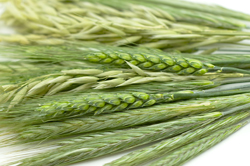Barley controls blood sugar levels
The ability to manipulate the glycaemic index (GI) of a meal means diabetics possess a level of control over blood sugar levels and consequently reduce the need for insulin. For the general population, contolling dietary carbohydrates can confer prevention against heart disease, diabetes, obesity and other diet-related diseases. The GI of a meal is affected by many variables including dietary fibre and fat intake plus individual physiological factors like intestinal bacterial flora and digestion rate. In order to optimise the GI of foods, the appropriately named EU funded project C13-STARCH set about characterising the metabolic quality of carbohydrates using 13C isotopes. The consortium team based at the University of Lund in Sweden focused on one dietary step away from the GI implications of the meal itself. Instead, they concentrated on the effects of starch content on meals taken subsequently. This so-called 'second-meal effect' was evaluated on healthy subjects using the hydrolysis index. For a short period between meals, the GI of the starch itself proved to be the important factor. However, for a longer stretch, such as that between evening meal and breakfast, other features came into play. Type and amount of indigestible carbohydrates were particularly important variables. Different types of low GI indigestible carbohydrate were tested against the old enemy, white bread, that has a mercilessly high GI. Whole boiled barley kernels appeared to be particularly effective at improving glucose tolerance in successive meals and the effects lasted all day up to ten hours. The reason behind this was attributed to the combination of low GI features and colonic fermentation of the barley cereal. Fermentation was reflected in increased hydrogen in the breath and short-chain fatty acid levels. Addition of low GI food like barley fibre can bring about an improvement in the glycaemic responses in subsequent meals throughout the day and even at breakfast the next morning. It would seem the bonus of reducing the associated risk factors of high GI foods would make the necessary advanced planning well worth the trouble.







